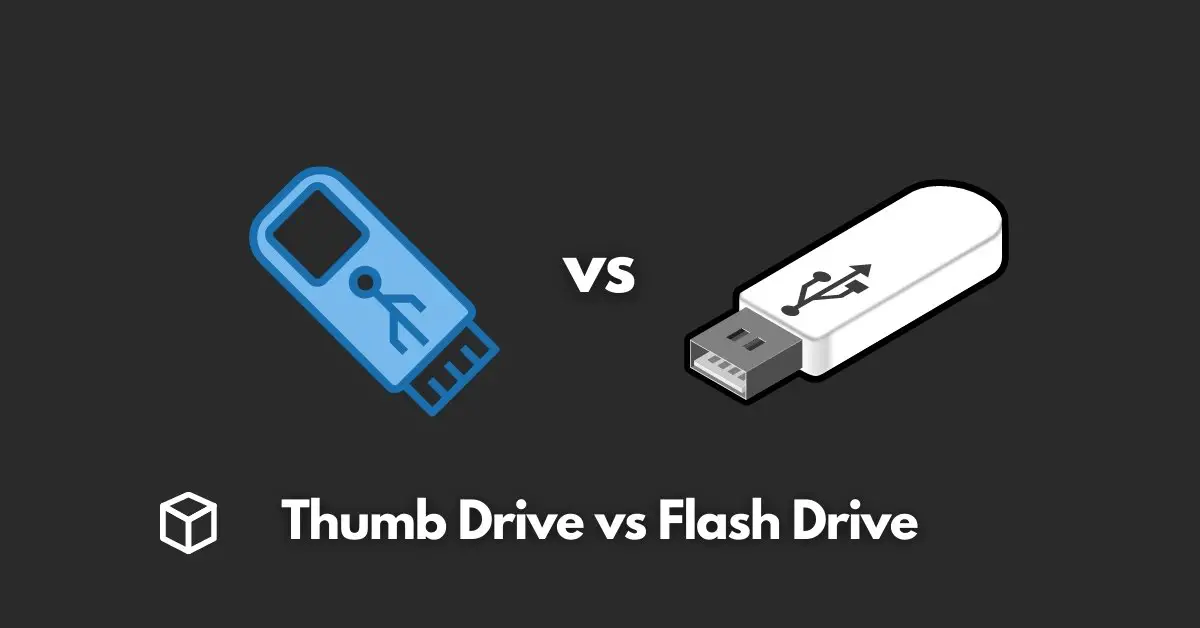Thumb drives and flash drives are two types of portable storage devices that are commonly used to store and transfer data.
They are similar in many ways, but there are also some key differences between the two.
In this article, we will take a closer look at the physical characteristics, capacity and speed, compatibility, durability, and cost of thumb drives and flash drives, and help you decide which one may be best for your specific needs.
Physical Characteristics
Thumb drives are small, portable storage devices that can easily fit in your pocket or on a keychain.
They are typically no larger than a pack of gum and are lightweight, making them easy to take with you on the go.
Flash drives are also small and portable, but they are slightly larger than thumb drives.
Both types of drives are available in a variety of colors and designs, so you can choose one that suits your personal style.
In terms of physical characteristics, thumb drives and flash drives are similar in size and portability, but thumb drives are slightly smaller and more compact.
If size is a major concern for you, a thumb drive may be a better choice.
Capacity and Speed
Thumb drives and flash drives are available in a range of storage capacities, from a few gigabytes to several terabytes.
The typical storage capacity for a thumb drive is between 4GB and 64GB, while the typical storage capacity for a flash drive is between 8GB and 256GB.
When it comes to speed, both thumb drives and flash drives can transfer data quickly.
However, flash drives generally have faster read and write speeds than thumb drives.
This is because flash drives use a different type of technology called NAND flash, which is faster than the NOR flash used in thumb drives.
The capacity and speed of a drive can impact its usage.
If you need to transfer large files quickly, a flash drive with a higher capacity and faster speeds may be a better choice.
If you’re looking for a small drive to store a few important files and take with you on the go, a thumb drive may be a better choice.
Compatibility
Thumb drives and flash drives are compatible with most computers and other devices that have a USB port.
They can also be used with smartphones, tablets, and other devices that support USB On-The-Go (OTG).
However, there may be some compatibility issues with certain devices and operating systems.
For example, some older computers may not recognize thumb drives or flash drives, and some devices may not support the high-speed data transfer rates of flash drives.
Durability
Thumb drives and flash drives are both durable and resistant to damage, but they may have different lifespans.
Thumb drives have a limited number of write cycles, which means they can only be written to a certain number of times before they fail.
Flash drives, on the other hand, have a larger number of write cycles and can last longer.
However, both types of drives are susceptible to physical damage, such as being dropped or exposed to water.
If you’re planning to use your drive in a harsh environment, or if you’re worried about losing it, you may want to consider a durable, water-resistant flash drive.
Cost
Thumb drives and flash drives are both affordable and widely available, but there may be some cost differences between the two.
Thumb drives are generally less expensive than flash drives, but the cost of a drive can vary depending on its storage capacity and speed.
If cost is a major concern for you, a thumb drive may be a better choice.
However, if you need a higher-capacity drive or faster speeds, a flash drive may be a better investment in the long run.
Conclusion
In summary, thumb drives and flash drives are both small, portable storage devices that are commonly used to store and transfer data.
They both have similar physical characteristics, but thumb drives are slightly smaller and more compact.
Flash drives typically have higher storage capacities and faster speeds than thumb drives, but they are also generally more expensive.
When deciding which type of drive to use, it’s important to consider your specific needs and usage.
If you need a small, affordable drive to store a few important files and take with you on the go, a thumb drive may be the best choice.
However, if you need to transfer large files quickly or store more data, a flash drive may be a better investment.
It’s also important to consider compatibility, durability and cost before making a decision.




